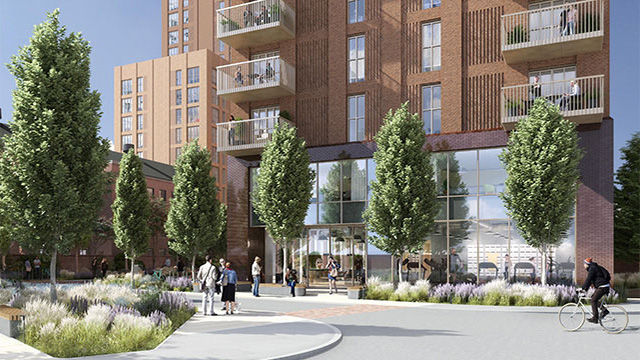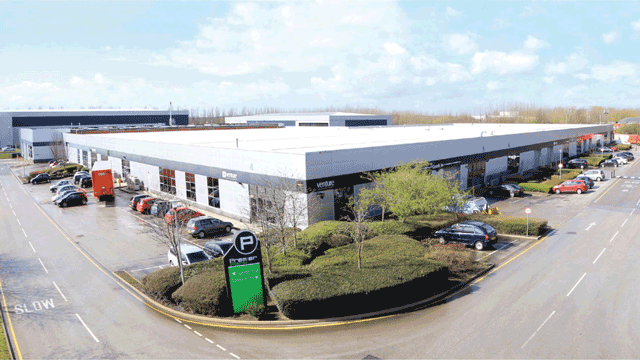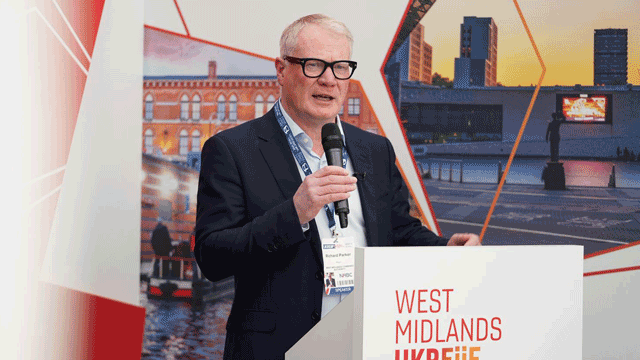Collective enfranchisement – Leasehold Reform, Housing and Urban Development Act 1993 – Purchase price – Appellants acquiring freehold of building by collective enfranchisement under 1993 Act – Two of appellants holding lease of basement flat within building on terms restricting use to caretaker’s flat – Whether price payable on enfranchisement to reflect prospect of unlocking additional value in basement flat by relaxing restriction – LVT including such value – Appeal allowed in part
The appellants together comprised the nominee purchaser on an application to acquire the freehold of a six-storey terraced house in Chelsea, London, from the respondent by collective enfranchisement under the Leasehold Reform, Housing and Urban Development Act 1993. The first and second appellants held both a headlease of the entire building excluding the basement flat and a separate headlease of that flat, for a term expiring in 2133, on terms limiting its use to a caretaker’s flat until 2043. They were qualifying tenants of both the basement flat and the second-floor flat. The third appellant was the qualifying tenant of the ground-floor flat.
On an application under section 91 of the 1993 Act, the leasehold valuation tribunal (LVT) decided that the restriction regarding the use of the basement flat should not be included in the transfer of the freehold. It determined that the price payable on enfranchisement was £995,500, which included an uplift of £161,750 to reflect the prospect that the restriction in the basement flat headlease could be relaxed by agreement so as to unlock significant additional value.
The LVT noted that the uplift could not be incorporated in the calculation of marriage value under Schedule 6 to the Act, since the basement flat lease had more than 80 years unexpired, but took the view that the likely removal of the restriction was an “appropriate” matter to assume, under para 3(2) of Part II of Schedule 6, when determining the amount that the freeholder’s interest in the specified premises might be expected to realise if sold at the valuation date.
The appellants appealed. They contended that the additional value in respect of the basement flat should be disregarded as either: (i) marriage value within para 4(2) of Schedule 6; or (ii) a form of hope value excluded by para 3(1) of Schedule 6, such that, being contrary to the provisions of para 3(1), the valuation assumption made by the LVT was neither within the ambit of “other matters” nor “appropriate” within para 3(2).
Held: The appeal was allowed in part.
(1) The provisions of Schedule 6 were intended to permit a commonsense view of the hypothetical transactions in the “no-enfranchisement” world. In principle, the valuer should strive to apply those provisions to reach to a price for the freehold that corresponded to market reality as closely as the statutory assumptions permitted.
While it subsisted, the leasehold covenant restricting the use of the basement flat held some monetary value in prospect for the respondent as the freehold owner of the building. Until it was removed, the covenant restricting the use of the basement flat would depress the price that a long leasehold interest in it would be likely to command in the market. Accordingly, the respondent, as freehold owner, could reasonably look forward to receiving a premium, either for agreeing to remove that restriction or for its ability to do so. The respondent could realise the additional value by a variation of the 2010 headlease to remove the restriction or by the grant of a new lease without that restriction, in which case a value would be crystallized at the level the parties agreed. Alternatively, the value could be realized by a sale of the freehold interest either to the existing leaseholders of the basement flat or to a third-party investor. Whichever method was chosen, the release or potential release of the restriction would attract its real value in the market. The expectation of realizing that additional value was intrinsic to the freeholder’s interest. As a result of the enfranchisement, the benefit of the restriction would pass to the nominee purchaser, and the appellants, as participating tenants, would be able to release it. That latent value could and should be reflected in the price to be paid for the freehold of the building on enfranchisement. To include such value would be consistent with the concepts of commercial sense and justice, provided that the determination of the price payable for the freeholder’s interest did not exceed the statutory parameters set by Schedule 6, the relevant principles of valuation were properly applied and the mischief of double counting or double recovery was avoided: Earl Cadogan v Sportelli [2008] UKHL 71; [2009] 1 EGLR 153 applied.
(2) The additional value was not excluded from consideration as a form of marriage value under para 4 of Schedule 6. Para 4 was precisely framed to define marriage value specifically as a form of value “attributable to” the potential ability of the participating tenants, on enfranchisement, “to have new leases granted to them”, without having to pay any premium and without any restriction on the length of the term. It did not refer to the variation of existing leases or to the prospect of negotiated agreements for the release or adjustment of restrictions in such leases. The concept of a new lease coming into existence on a surrender and re-grant was not to be conflated with the concept of the terms of an existing lease being varied. The value locked into the restriction was not an increase in value arising from the potential ability of the participating tenants, on their acquisition of the freehold, to have new leases granted to them. It was a value inherent in the freeholder’s power as landlord to relieve its tenant of a restriction that it might otherwise enforce. That value was not contingent on a claim for enfranchisement succeeding and did not depend on freehold and leasehold interests being merged. Nothing in para 4 excluded a potential benefit of that kind from the valuation of the freeholder’s interest under para 3 if it was truly germane to the value of that interest.
(3) Nor was such value excluded as being inimical to the provisions of para 3 of Schedule 6. The value of the freeholder’s interest in that respect was not predicated on a transaction other than the hypothetical sale of the freehold itself and the capital payment resulting from that sale. It assumed that a notional third-party purchaser of the freehold reversion would bid in the open market on the basis that the leaseholder of the basement flat would probably be prepared to pay a capital sum to free himself from the restriction binding its use. That was a sensible and realistic assumption, which the LVT had been entitled to make in light of the facts and circumstances as it knew them to be, and did not lie outside the range of assumptions available under para 3. It did not offend the requirement, in para 3(1), that the valuer should consider a sale of the freehold interest without the nominee purchaser or any other tenant of the premises “buying or seeking to buy” a relevant interest. The concept of tenants not being “in the market” did not extend to their seeking, or being likely to seek, a release from the restriction on the use of the basement flat; that was not tantamount to their “buying or seeking to buy” a relevant interest for the purposes of para 3: Sportelli and Van Dal Footwear Ltd v Ryman Ltd [2009] EWCA Civ 1478; [2009] PLSCS 338 considered.
(4) However, it was common ground that the LVT had taken a flawed approach when calculating the value attributable to the removal of the restriction; accordingly, the matter would be remitted to the LVT to reconsider the valuation of the freehold interest on the evidence and submissions before it.
Timothy Dutton QC (instructed by Wilson Barca Solicitors) appeared for the appellants; Ellodie Gibbons (instructed by Pemberton Greenish LLP) appeared for the respondent.
Sally Dobson, barrister






